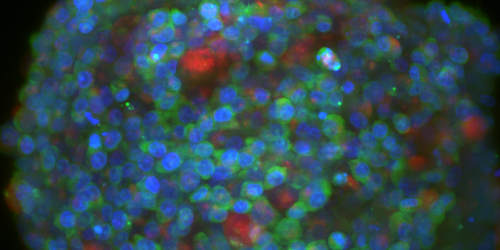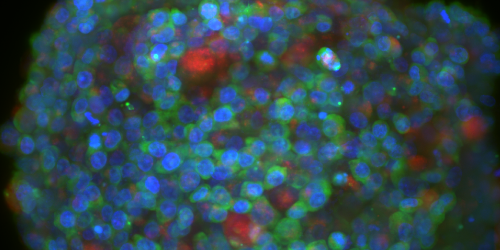Mapping a Tumor’s Mechanical Properties with Light
The successful treatment of a tumor largely depends on the capacity of anticancer drugs to infiltrate its bulk. Diagnosing the effectiveness of this process requires tools that can probe the tumor in its entirety. Now, a team led by Thomas Dehoux at the University of Lyon, France, has developed a light-scattering method that maps out the mechanical properties of a tumor’s cellular structure as well as its internal fluids, revealing changes due to chemotherapy treatment.
A tumor can be represented as a cluster of elastically coupled cells, with fluid inside the cells and additional fluid in between them. So far, studies trying to characterize tumors have mostly looked at their near-static, low-frequency (Hz) mechanical response, which essentially reveals information about the elastic cell network. These approaches tend to ignore the tumor’s fluids, even though these fluids are expected to play a significant role in mechanisms such as tumor growth and drug penetration. Dehoux and colleagues devised a method that employs monochromatic light to extract the high-frequency (GHz) mechanical response, which depends on both the fluid component and the elastic cell structure. The team shined a light beam into a target tumor and recorded the scattered light from different micrometer-sized regions. As the scattering depends on the local elastic properties, the team was able to construct images showing the variations in mechanical properties within the tumor. The researchers demonstrated their ability to identify tissues that have a greater probability of spreading to other parts of the body. They also tracked how the tumor evolved in response to chemotherapy, which revealed a diminished impact of the treatment in the tumor core where the drugs have difficulty penetrating.
This research is published in Physical Review Letters.
–Nicolas Doiron-Leyraud
Nicolas Doiron-Leyraud is a Corresponding Editor for Physics.





